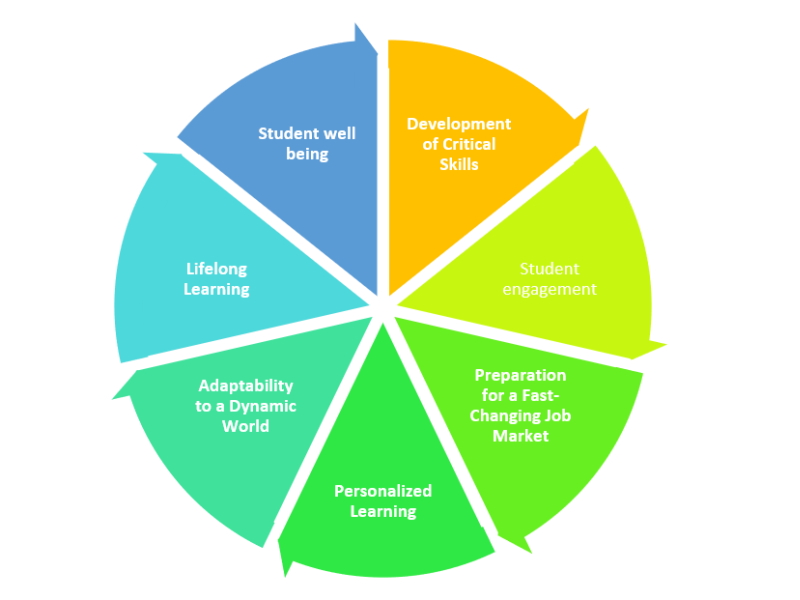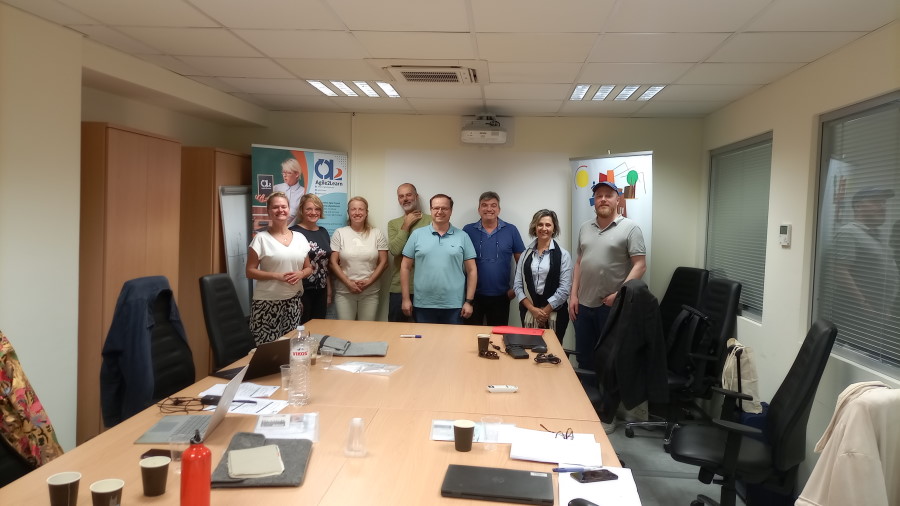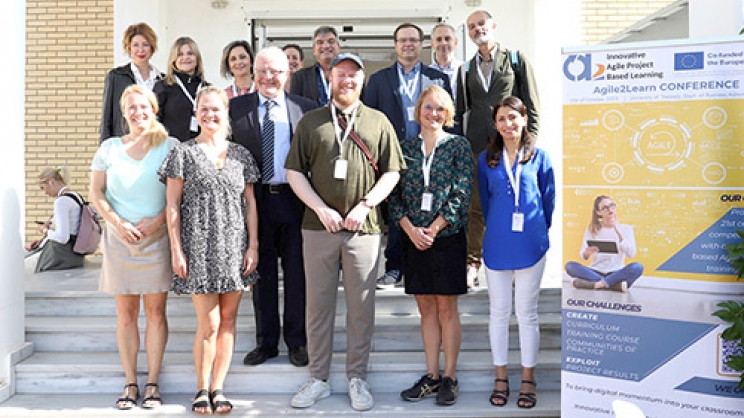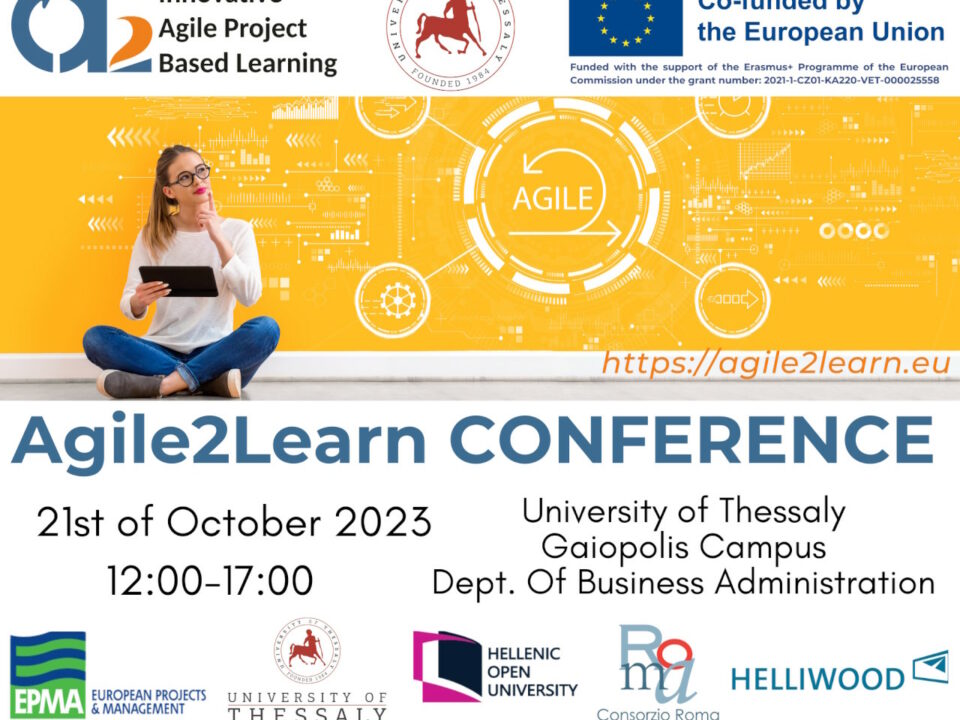Panos Fitsilis (fitsilis@uth.gr)
Vyron Damasiotis (damasiotis@uth.gr)
Introduction
Education is undergoing a profound transformation as the needs and expectations of students evolve in the fast-paced, technology-driven world. In this era of constant change, traditional educational approaches are becoming increasingly inadequate. To meet the dynamic requirements of students, educators are embracing agile learning methodologies that emphasize adaptability, collaboration, and personalized learning experiences. Agile learning in education is a flexible and student-centric approach that enables educators to tailor their teaching methods to address the changing needs of students. This article explores the concept of agile learning in education and its significance in adapting to the evolving educational landscape.
The Need for Agile Learning in Education
Agile learning in education is necessary to address the changing needs and demands of students in today's rapidly evolving world. Here are some key reasons why we need agile learning in education:
- Adaptability to a Dynamic World: The world is constantly changing, driven by advancements in technology, shifts in the job market, and evolving societal needs. Traditional educational approaches often struggle to keep pace with these changes. Agile learning allows educators to adapt their teaching methods and curriculum to meet the evolving needs of students and prepare them for the challenges and opportunities of the future (Lang, et al. 2021).
- Personalized Learning Experiences: Every student is unique, with different learning styles, strengths, and interests. Agile learning acknowledges and accommodates these individual differences by offering personalized learning experiences. It allows educators to tailor instruction and provide targeted support to meet the specific needs of each student, resulting in improved engagement, motivation, and learning outcomes (Shemshack & Spector2020; Dobler, 2015).
- Enhanced Student Engagement: Agile learning actively involves students in the learning process, fostering a sense of ownership and engagement. By incorporating elements such as student choice, collaboration, and hands-on activities, agile learning encourages active participation and promotes a deeper understanding of the subject matter.
- Development of Critical Skills: In addition to subject knowledge, students need to develop critical skills such as problem-solving, creativity, communication, and collaboration. Agile learning provides opportunities for students to develop these skills through project-based learning, real-world applications, and iterative problem-solving processes. It encourages students to think critically, analyze information, and apply their knowledge in practical scenarios (Terenzini, et al. 1995)
- Preparation for a Fast-Changing labor Market: The labor market is undergoing rapid transformations due to automation, artificial intelligence, and other technological advancements. To thrive in this changing landscape, students need to develop a growth mindset, adaptability, and a willingness to continuously learn and upskill. Agile learning equips students with the skills and mindset necessary to navigate and succeed in the future job market.
- Lifelong Learning: Agile learning promotes a culture of lifelong learning, emphasizing that education is not confined to the classroom or a specific period of life. By cultivating curiosity, self-directed learning, and the ability to learn from failures, agile learning prepares students to become lifelong learners who can adapt and thrive in a world of constant change (López-Alcarria et al., 2019).
- Student Well-being and Holistic Development: Agile learning takes into account the holistic development of students, focusing not only on academic achievement but also on their well-being, social-emotional skills, and character development. It promotes a supportive and inclusive learning environment that considers students' mental health, social interactions, and overall well-being.
In summary, agile learning in education is crucial because it enables educators to adapt to the changing needs of students, provides personalized learning experiences, enhances student engagement, develops critical skills, prepares students for the future job market, fosters a culture of lifelong learning, and promotes student well-being and holistic development. By embracing agile learning approaches, we can create an educational system that is more responsive, effective, and relevant in preparing students for success in a rapidly evolving world.
Conclusion
Agile learning in education represents a shift towards student-centered, adaptable, and personalized learning experiences. By embracing the principles of flexibility, collaboration, and iterative improvement, educators can better meet the changing needs and expectations of students. Agile learning fosters engagement, critical thinking, and problem-solving skills necessary for success in the rapidly evolving world. As education continues to transform, the adoption of agile learning approaches will play a pivotal role in ensuring that students receive relevant and effective education tailored to their individual needs.
References
- Lang, J. W., Runge, J. M., & De Fruyt, F. (2021). What are agile, flexible, or adaptable employees and students? A typology of dynamic individual differences in applied settings. European Journal of Personality, 35(4), 510-533.
- Dobler, E. (2015). E‐textbooks: A personalized learning experience or a digital distraction?. Journal of adolescent & adult literacy, 58(6), 482-491.
- Shemshack, A., & Spector, J. M. (2020). A systematic literature review of personalized learning terms. Smart Learning Environments, 7(1), 1-20.
- Terenzini, P. T., Springer, L., Pascarella, E. T., & Nora, A. (1995). Influences affecting the development of students' critical thinking skills. Research in higher education, 36(1), 23-39.
- López-Alcarria, A., Olivares-Vicente, A., & Poza-Vilches, F. (2019). A systematic review of the use of agile methodologies in education to foster sustainability competencies. Sustainability, 11(10), 2915.





